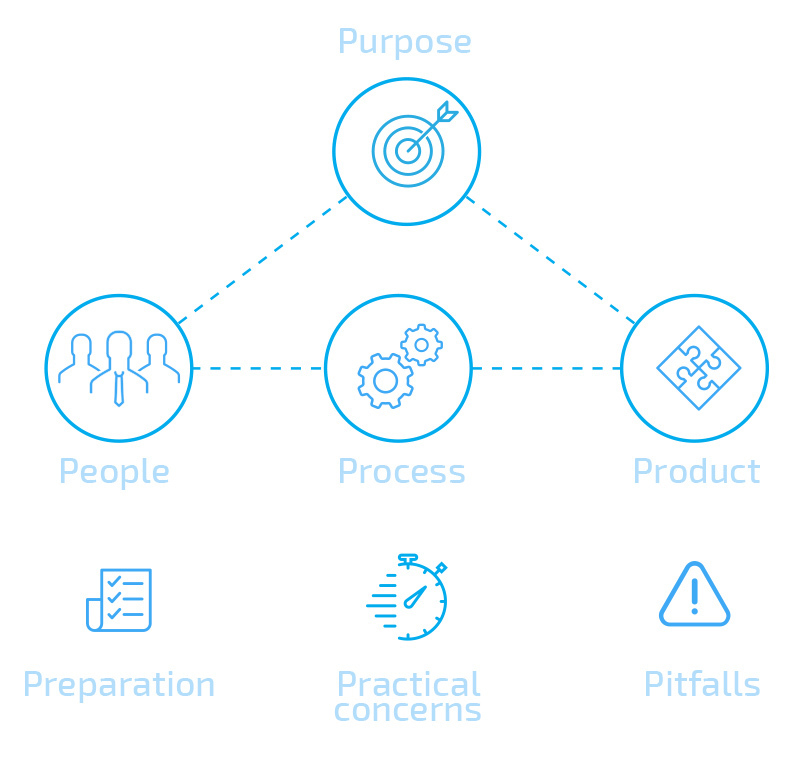7Ps Framework: we structure meetings to make effective

Colleagues project managers will understand: there is no greater evil than meetings for the sake of meetings - our personal adherence to perfectionists, whose world is built on controlling resources and, above all, controlling the time of project participants. I will share the methodology that I use to make evil manageable. This is a compilation of the principles of the 7Ps Framework from James Macanufo and my improvements to the framework for myself, which I learned from working on projects in the UIS.
What are we fighting
With low efficiency of holding meetings. They are delayed, no decisions are made, colleagues grumble about “another useless meeting”, the goal is not clear and it’s not at all clear why it was necessary to meet. All this leads to the fact that the participants are completely demotivated and do not want to take at least some part in the process. The quality of decisions, if accepted, is reduced.
7Ps Solution
The 7Ps framework provides a structure that makes the basic rule feasible: “When you make an appointment, you must ensure that the participants spend their time with benefits for the company and for themselves.”
Why 7Ps:
- Purpose. We form the purpose of the meeting. Why are we all all gathered? If you can not clearly answer these questions, it is better not to hold a meeting.
- People. Who will participate in the meeting and who needs it at all to achieve its goal?
- Product. What should be the result of the meeting? How to measure that we have achieved the result?
- Process. Meeting meeting, ways to make final decisions, who will facilitate the meeting. For example, you can collect the opinions of all participants in the meeting and make the final decision alone, but it is important that everyone understands how it will be accepted.
- Pitfalls. We think over possible difficult situations that may arise at the meeting and how to solve them. What are the risks, how can they be managed? What rules should be set at the beginning of the meeting?
- Prep. What you need to prepare before the meeting? What more to read? Maybe participants need to do some “homework”.
- Practical Concerns. Where and when will the meeting take place? Is there enough room for everyone? What equipment might be needed? Do I need to reserve a room in advance?
It is important to consider that each “P” affects the others. For example, the lack of rules (poorly crafted Pitfalls) of a meeting can affect Process and Product.
Additional tips
- Participants are better informed about the meeting in advance, as they may have their own plans. If possible, let them know about the date and time of the meeting in a few days, so that for them it would not be a surprise.
- Get confirmation from everyone to attend the meeting.
- Remind all participants of the meeting a couple of days before it starts.
- Be sure to tell the estimated duration of the meeting.
- Before the meeting, arrange a break. For example, you can use the rule of 50 at 10: 50 minutes meeting, 10 minutes break.
- Before the meeting, it is desirable to agree on organizational rules: for example, no telephones and laptops, no accusations against each other, etc.
Where to study the topic further
You can read more about the 7Ps Framework here: Gamestorming: A Playbook for Innovators, Rulebreakers, and Changemakers , Dave Gray, Sunni Brown, James Macanufo
')
Source: https://habr.com/ru/post/327054/
All Articles